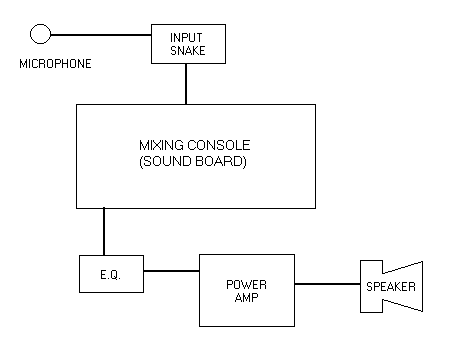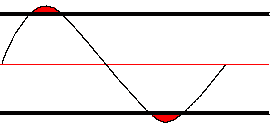|
HOME - ABOUT US - OUR PRINCIPAL - CONTACT US - TECH. RATES - EQUIP. RATES - FEE SCHEDULE - LINKS |
|
|
|
|
|
AUDIO BASICS: |
|
|
Why you need a UNIQUE ENGINEERED SOLUTION. Basics on AUDIO and VIDEO. Are you interested in a Live or Recorded Webcast? CLICK HERE. What you need to know about HOME THEATER. UES CLASSES and Certifications. Glossary of AUDIO TERMS. Glossary of STAGE TERMS. Do you have a web camera at home? Here's some LIGHTING TIPS. Read about a few PRODUCTS we are developing. (This page still unpublished.) LINKS to a few Manufacturer of Multimedia Equipment websites. A few trade publications ONLINE.
|
What is sound reinforcement & why is it necessary? Sound reinforcement is the method by which a sound system is used to amplify & deliver a boosted output back to an audience via loudspeakers in the form of sound. A sound system can be defined as a group of electronic systems/networks that amplify sound. There are many reasons why this could be done. The most obvious would be to allow a voice on-stage to be heard at the back of an auditorium. In this case, the objective would NOT be to make the sound any louder than it is heard up close. Other reasons could include amplifying vocals in a musical so that they are "larger than life" to add excitement. Sound may also need to be routed into another room for a secondary crowd. (In the case that a lector hall may be filled, etc.) What components are necessary in a sound reinforcement system?
A sound system contains three main groups into which the components are grouped. The input transducers, signal processors, & output transducers. An input transducer is a device that converts sound waves or other patterns into a signal. (A microphone or contact pickup) A signal processor is any device that takes the signal & changes one or more characteristics of it. (An amplifier, mixer, etc.) An output transducer is a device that converts the processed signal back into sound. (Loudspeaker, headphone, etc.)
INPUT
TRANSDUCERS There are several different microphones & contact pickups. Just to name a few, there are CD laser pickups, phonograph pickups, microphones, magnetic pickups, etc. Contact pickups convert a pattern (sound wave, fluctuating magnetic field, etc.) into an electrical signal. A signal is an electrical representation of a sound wave in the form of a fluctuating voltage.
These devices take the signal from the input transducers (microphone) & change one or more properties. Amplifiers strengthen the signal while an equalizer varies the frequency response. There are also other complex units. For example: A BBE processor will take a signal & bring it as close as possible to the way it sounded in the recording studio. A signal is an alternating strength of voltage usually changing from positive to negative repeatedly. The highest extent of the signal is called the amplitude. When a signal's voltage is plotted against time, the result is that of the image below and is properly referred to as a "waveform."
The voltage value is vertical in this diagram & it is plotted against time on the horizontal axis. The horizontal red line in the middle represents "0" voltage. Please note that the above diagram is a clipped signal. The two solid black lines at the top and bottom represent the amplifier's maximum voltage. Note that the signal's amplitude extends above & beyond the amplifier's maximum voltage & results in getting "clipped off." The filled red region represents the clipping region. The end result is severe distortion through the PA, which is very unpleasant & could damage your speakers. OUTPUT TRANSDUCERS There are many different types of transducers. A woofer reproduces the low frequencies, a mid-range driver reproduces mid frequencies, while a tweeter reproduces the highs. There are also full range speakers that cover all of these frequencies, although most of them don't cover the extreme low or high frequencies as well. In certain installations, we will recommend SONIC transducers. These devices convert the sound to a form of kinetic energy you can actually feel. (Talk about bringing the sound to life- Wow!). Let us provide you with a Unique Engineered Solution on your next project so you can get a whole lot more than an off the shelf experience.
|


